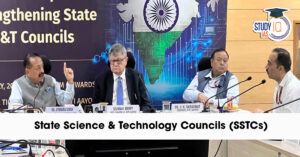Table of Contents
The Semiconductor Industry in India is the backbone of modern technology, driving innovations in smartphones, computers, and countless other electronic devices. India, traditionally known for its software and IT services prowess has been steadily making strides in the semiconductor domain. In this article, we will explore the growth, challenges, and future prospects of the semiconductor industry in India.
Government Approved 3 Semiconductor Units in Gujarat and Assam
The Cabinet approved Tata Group’s semiconductor fab in Gujarat’s Dholera, marking a milestone with an investment of Rs 50,000 crore. Tata Electronics partners with Taiwan’s PSMC for the venture. Additionally, Assam and Gujarat will host semiconductor units worth Rs 1.26 lakh crore collectively.
Tata Sons’ broader strategy includes investments exceeding $120 billion, focusing on semiconductors, defense, electric vehicles, and Air India. This move underscores India’s shift towards advanced manufacturing and supply chain resilience. Tata’s proactive approach includes exploring partnerships with major players like PSMC and UMC Group, indicating a transformative trajectory for the country’s technological landscape.
Semiconductor Industry in India
India’s journey in the semiconductor industry began in the early 1980s, with the establishment of Semiconductor Complex Limited (SCL) in Mohali. This marked the inception of semiconductor manufacturing in the country. However, it took several years for the industry to gain momentum due to various challenges, including limited infrastructure, skilled labour shortages, and a lack of government support.
Climate Change Threatens Semiconductor Industry in India: Latest News
Moody’s report underscores that climate change poses a significant threat to India’s ambition of becoming a semiconductor manufacturing hub. The semiconductor industry plays a crucial role in modern technology, but it has a substantial environmental footprint. The report warns that global warming can damage manufacturing facilities, disrupt supply chains, and lead to financial losses, potentially deterring investments.
This issue is not unique to India, as even Taiwan, a semiconductor leader, faces similar challenges due to erratic weather patterns. While some industry players are working to reduce their environmental impact, India’s semiconductor sector should invest in climate-resilient infrastructure, adopt sustainable practices, and learn from global experiences to ensure its competitiveness in the face of climate change.
List of Semiconductor Companies in India
| S.No | Company | Products | Location |
| 1. | Saankhya Labs | Semiconductor Solutions | Bengaluru |
| 2. | ASM Technologies | Semiconductor Engineering | Bengaluru |
| 3. | Broadcom Inc | Semiconductor and Infrastructure Software | Bangalore |
| 4. | Chiplogic Technologies | Semiconductor Design Services | Bangalore |
| 5. | CDIL | Semiconductor Manufacturer | New Delhi |
| 6. | MosChip Semiconductor Tech | Fabless Semiconductor | Hyderabad |
| 7. | Einfochips | Semiconductor Design Services | Ahmadabad |
| 8. | Tata Elxsi | AI, Machine learning, NLP | Bengaluru |
| 9. | Semi-Conductor Laboratory | R&D in Semiconductor Technology | Mohali |
| 10. | NXP Semiconductors | Semiconductor Startup Incubation | Bangalore |
Semiconductor Manufacturing Industry in India
The semiconductor manufacturing industry in India is gradually emerging as a promising player in the global tech landscape. The inauguration of Intel India’s semiconductor fab in Durgapur, India marked a significant milestone in domestic semiconductor production. The government’s “Make in India” and “Atmanirbhar Bharat” initiatives aim to reduce import reliance and boost domestic manufacturing, including semiconductors.
However, the industry faces challenges such as high setup costs, competition from global leaders, and the need for a robust supply chain. Collaboration with global semiconductor giants, investments, and knowledge-sharing are vital to India’s growth in this sector. Research and development efforts, such as those by the Semi-Conductor Laboratory in Mohali, contribute to indigenous technology development.
With the rising demand for semiconductor chips driven by technologies like 5G, the Internet of Things, and Artificial Intelligence, India’s semiconductor manufacturing industry holds promise. It aims to position itself as a crucial part of the global supply chain, offering opportunities for economic growth and technological advancement in the country.
Semiconductor Market in India
India is currently dependent on imports for all its semiconductor chips, but the market is on an upward trajectory, projected to reach $100 billion by 2025, up from the current $24 billion. To bolster domestic semiconductor manufacturing, India has launched several initiatives:
- The Union Cabinet has allocated a substantial sum of ₹76,000 crore to foster the development of a ‘semiconductors and display manufacturing ecosystem.’ This funding will facilitate the creation of a robust infrastructure for semiconductor manufacturing.
- Significant incentives are planned for design companies to encourage chip design within India. This initiative aims to promote indigenous chip design capabilities.
- The Scheme for Promotion of Manufacturing of Electronic Components and Semiconductors (SPECS) has been introduced to promote the local manufacturing of electronic components and semiconductor devices.
- In 2021, the Ministry of Electronics and Information Technology (MeitY) launched the Design Linked Incentive (DLI) Scheme, with the goal of nurturing at least 20 domestic semiconductor design companies, enabling them to achieve a turnover of over Rs. 1500 Crore in the next 5 years.
India’s demand for semiconductors is set to surge, with projections indicating consumption surpassing USD 80 billion by 2026 and reaching USD 110 billion by 2030. These initiatives signify India’s commitment to becoming more self-reliant in semiconductor production and meeting its burgeoning domestic needs.
Future of Semiconductor Industry in India
The future of the semiconductor industry in India looks promising. With the advent of 5G technology, the Internet of Things (IoT), and artificial intelligence (AI), the demand for semiconductor chips is set to skyrocket. India can position itself as a hub for design, manufacturing, and R&D in these emerging technologies.
Moreover, the government’s focus on self-reliance and indigenous manufacturing, as seen in the “Atmanirbhar Bharat” initiative, aligns with the semiconductor industry’s growth aspirations. Collaborations with global semiconductor giants and the development of semiconductor parks are steps in the right direction.
Challenges Related to Semiconductor Industry in India
While India’s semiconductor industry has shown remarkable growth, it faces several challenges that need to be addressed for sustainable development:
- Skilled Workforce: The semiconductor industry requires highly skilled engineers and researchers. India needs to invest in education and training programs to bridge the skills gap.
- Infrastructure: Developing semiconductor fabrication facilities requires massive investments in infrastructure. The government and private sector need to collaborate to create the necessary infrastructure for semiconductor manufacturing.
- Supply Chain: A robust supply chain is vital for semiconductor manufacturing. India needs to develop a comprehensive ecosystem that includes raw materials, equipment, and logistics support.
- Research and Development: Continued innovation is key to staying competitive in the semiconductor industry. Encouraging research and development initiatives is crucial.
Semiconductor Industry in India UPSC
The semiconductor industry in India is making significant strides with the inauguration of Intel India’s fab and government initiatives like “Make in India.” Challenges such as skilled workforce shortages and infrastructure gaps must be addressed. India’s semiconductor market is set to reach $100 billion by 2025, propelled by rising demand, but the nation currently depends on imports. Government allocations of ₹76,000 crore and incentives for chip design aim to bolster domestic manufacturing. With a focus on 5G, IoT, and AI, India’s semiconductor industry is poised for growth, positioning itself as a hub for design, manufacturing, and R&D in these emerging technologies.

 State Science and Technology Councils (S...
State Science and Technology Councils (S...
 Astronomers Discover Third Interstellar ...
Astronomers Discover Third Interstellar ...
 DRDO and Air Force Successfully Test Ind...
DRDO and Air Force Successfully Test Ind...





















